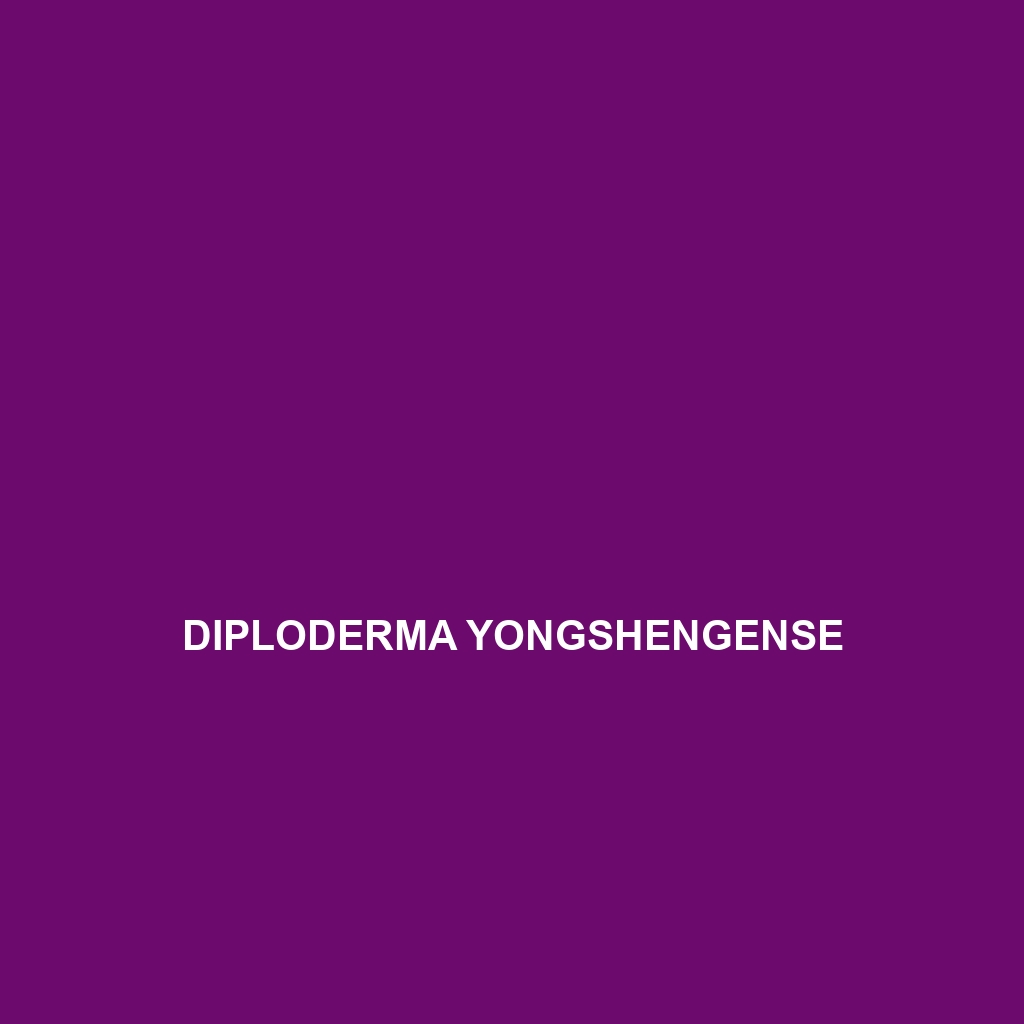Species Description: Diploderma yongshengense
Common Name: Diploderma yongshengense
Scientific Name: Diploderma yongshengense
Habitat
Diploderma yongshengense is primarily found in the mountainous regions of Yunnan Province, China. It thrives in temperate forests characterized by a diverse array of flora, including deciduous and coniferous trees. This species is typically located at elevations of around 1,800 to 2,500 meters above sea level, where the climate remains humid and the environment is rich in leaf litter and underbrush, providing ample shelter.
Physical Characteristics
Diploderma yongshengense exhibits distinct physical traits that set it apart from other lizards. Adults can reach a size of approximately 15 to 20 centimeters in length. The coloration is primarily a rich brown to olive green, adorned with irregular darker spots that provide excellent camouflage among leaves and bark. The body is elongated with a slender tail and robust limbs, while its specialized toe pads allow for adept climbing on vertical surfaces.
Behavior
This species is known for its diurnal activity, meaning it is most active during daylight hours. Diploderma yongshengense exhibits a behavior of basking in the sun to regulate its body temperature. These lizards are also territorial, demonstrating behaviors such as posturing and head-bobbing to assert dominance. They are generally solitary but can be seen in small groups during the breeding season.
Diet
The diet of Diploderma yongshengense primarily consists of insects, spiders, and small invertebrates. This species is an insectivore, relying on its sharp eyesight to hunt and forage for food during the day. They play a crucial role in controlling insect populations within their habitat, enhancing the ecological balance.
Reproduction
Diploderma yongshengense breeds during the spring season, with females laying a clutch of 2 to 5 eggs. The eggs are typically buried in leaf litter to foster proper incubation conditions. After a period of approximately 60 to 90 days, hatchlings emerge, fully formed and able to fend for themselves shortly after birth.
Conservation Status
According to the IUCN Red List, Diploderma yongshengense is currently classified as endangered due to habitat loss from deforestation and agricultural expansion. Conservation efforts are critical to preserve this species and its natural habitat, which are increasingly threatened by human activities.
Interesting Facts
One fascinating aspect of Diploderma yongshengense is its ability to change colors slightly in response to temperature and humidity, making it a subject of interest for researchers studying thermoregulation in reptiles. Additionally, its unique climbing adaptations allow it to navigate challenging terrains with ease.
Role in Ecosystem
As an insectivore, Diploderma yongshengense plays a vital role in controlling insect populations within its forest ecosystem. Its interactions with other species, including its prey and potential predators, help maintain ecological balance. Additionally, it serves as an indicator species, reflecting the health of its natural habitat.
